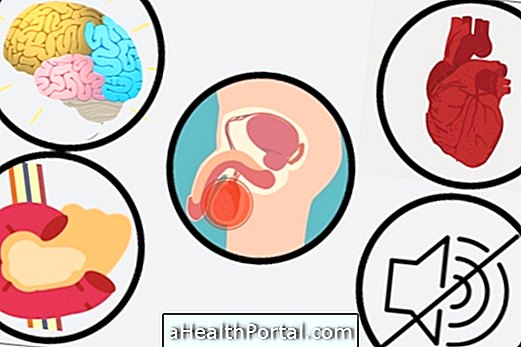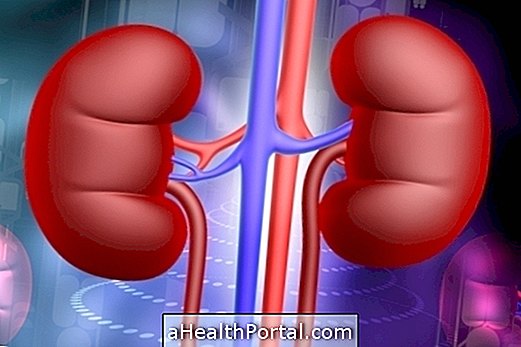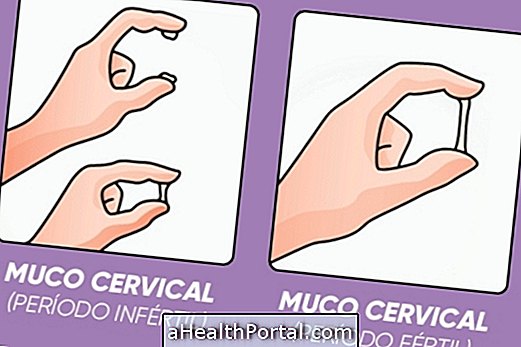Hepatitis B is an inflammation of the liver caused by hepatitis B virus (HBV) infection, which can either lead to acute hepatitis with symptoms such as fever, nausea, vomiting, or yellowing of the eyes and skin, or progress to a chronic phase. be asymptomatic or cause serious liver impairment, with cirrhosis and changes in function.
Hepatitis B is contagious because the virus can be transmitted through blood, semen or vaginal secretions, however, it is possible to be protected against infection if the hepatitis B vaccine is properly taken. Learn other ways to protect yourself against hepatitis.
Treatment of hepatitis varies according to the stage of the disease, and acute hepatitis is recommended for rest, hydration and diet, and in chronic hepatitis the treatment can be done with remedies prescribed by the hepatologist, such as Interferon and Lamivudine.

Hepatitis B has a cure?
Acute hepatitis B has spontaneous cure, in most cases, because the body itself creates antibodies to eliminate the virus. However, in some cases, hepatitis B can become chronic and the virus stays in the body for life.
In chronic hepatitis B there is a high risk of serious liver diseases, such as liver cirrhosis, liver failure and liver cancer, which can create irreversible damage to the liver, so in these cases, patients should follow the treatment indicated by the doctor.
However, with treatment, the individual can become chronic carrier is, that is, it can contain the virus in the body but have no active liver disease, in this case not having to take medicine. In addition, patients with chronic hepatitis B may be cured after several years of treatment.
How transmission occurs
The hepatitis B virus can be transmitted by contact with blood and other bodily secretions such as semen, vaginal secretions and saliva through:
- Direct contact with the blood and secretions of a contaminated individual;
- Unprotected sex without a condom;
- Use of blood-contaminated material or secretions such as used syringes in the case of drugs, needles and other instruments used to make tattoos or acupuncture, material used to pierce and manicure or pedicure instruments performed in salons;
- Sharing of personal hygiene items such as razors or shavers and manicure or pedicure instruments. Learn how to get hepatitis through the manicure;
- During normal delivery or breastfeeding (uncommon).
Blood transfusions performed before 1992 may have transmitted the hepatitis B virus, but this is no longer the case.
The hepatitis B virus can not be transmitted through air, sweat, handshake, hugs, coughing or sneezing. Although it can be transmitted by saliva, it is not usually transmitted through kissing or sharing of cutlery or cups, as it is necessary that there is an open wound in the mouth.

Hepatitis B Vaccine
The hepatitis B vaccine is the most effective form of prevention of the disease and should therefore be taken soon after birth, until the first 12 hours after delivery, the second month and the sixth month of the baby's life, a total of 3 doses.
Adults who have not been vaccinated as a child can take the vaccine, including pregnant women, who can take the vaccine during pregnancy, from the second trimester of pregnancy. In adults, the hepatitis B vaccine is also given in 3 doses, the 1st dose can be taken as needed, the 2nd dose after 30 days and the 3rd dose after 180 days of the first dose.
The test that indicates the efficacy of the hepatitis B vaccine is Anti-HBs which is positive when the vaccine is able to activate protection against the virus. Find out when it is indicated and how to take the hepatitis B vaccine.
How is the diagnosis made?
The diagnosis of hepatitis B can be done through a blood test to detect the hepatitis B virus, its amount in the blood and how long the patient has been contaminated, as well as the amount of liver enzymes in the blood.
Thus, the diagnosis of hepatitis B is made according to the presence or absence of antigens (Ag) and antibodies (Anti) in the blood representing:
- Reagent or positive HBsAg : hepatitis B virus infection;
- AgHBe reagent: high degree of replication of the hepatitis B virus, which means that the risk of virus transmission is higher;
- Anti-HBs reagent: curing or immunity against the virus if the individual has been vaccinated against hepatitis B;
- Anti-HBc reagent: prior exposure to hepatitis B virus.
Liver biopsy may also be used to aid in diagnosis, liver impairment, prediction of disease progression, and need for treatment.

Main symptoms
The incubation period of hepatitis B is 2 to 6 months, so the signs and symptoms of acute hepatitis B may appear after 1 to 3 months of the contamination.
The initial symptoms of hepatitis B include:
- Numbness;
- Vomiting;
- Tiredness;
- Low fever;
- Lack of appetite;
- Abdominal pain;
- Pain in joints and muscles.
Symptoms such as yellowing of the skin and eyes, dark urine and light stools mean that hepatitis B has worsened.
In chronic hepatitis B, most patients do not show any symptoms, but the virus continues in the body and can be transmitted in the same way.
How to treat
Treatment for acute hepatitis B includes only rest, diet, hydration, and non-ingestion of alcoholic beverages because healing is achieved in most cases. If necessary, the individual may take remedies indicated by the hepatologist to relieve symptoms such as fever, muscle and headache, nausea and vomiting.
Treatment for chronic hepatitis B, in addition to non-alcohol consumption and a low-fat diet, includes antiviral and immunomodulatory drugs such as Interferon and Lamivudine, for example to prevent irreversible liver damage, which may need to be taken throughout the liver. life.
However, when it is confirmed by the blood test that the person with chronic hepatitis B does not have liver disease, he does not need to take the drugs anymore, which is why people with chronic hepatitis B need to have blood tests frequently. Learn more about Hepatitis B Treatment.
Watch in the following video how to feed in case of hepatitis B to avoid further complications in the liver:

Forms of prevention
The prevention of hepatitis B can be done through the 3 doses of the vaccine and the use of the condom in all relations. The use of the condom is very important because there are several different hepatitis viruses and the patient who has taken the hepatitis B vaccine may come to take hepatitis C, for example.
Also, it is important not to share personal belongings such as a toothbrush, razor or epilator, and manicure or pedicure instruments, as well as syringes or other sharp instruments. If the individual wants to get a tattoo, piercing or acupuncture, one should make sure that all materials are properly sterilized.





















